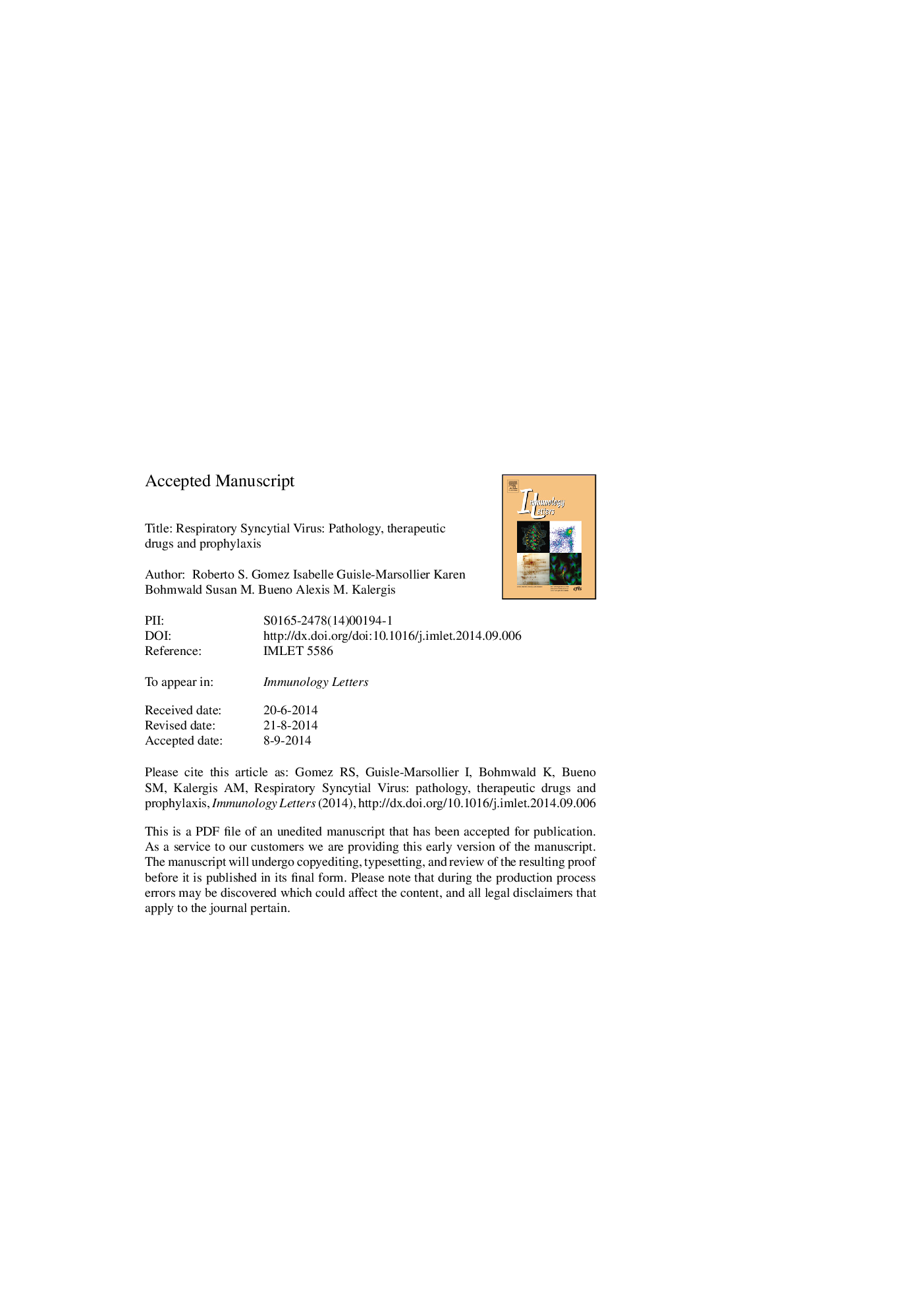| Article ID | Journal | Published Year | Pages | File Type |
|---|---|---|---|---|
| 6117218 | Immunology Letters | 2014 | 37 Pages |
Abstract
Human Respiratory Syncytial Virus (hRSV) is the leading cause of lower respiratory tract diseases, affecting particularly newborns and young children. This virus is able to modulate the immune response, generating a pro-inflammatory environment in the airways that causes obstruction and pulmonary alterations in the infected host. To date, no vaccines are available for human use and the first vaccine that reached clinical trials produced an enhanced hRSV-associated pathology 50 years ago, resulting in the death of two children. Currently, only two therapeutic approaches have been used to treat hRSV infection in high risk children: 1. Palivizumab, a humanized antibody against the F glycoprotein that reduces to half the number of hospitalized cases and 2. Ribavirin, which fails to have a significant therapeutic effect. A major caveat for these approaches is their high economical cost, which highlights the need of new and affordable therapeutic or prophylactic tools to treat or prevents hRSV infection. Accordingly, several efforts are in progress to understand the hRSV-associated pathology and to characterize the immune response elicited by this virus. Currently, preclinical and clinical trials are being conducted to evaluate safety and efficacy of several drugs and vaccines, which have shown promising results. In this article, we discuss the most important advances in the development of drugs and vaccines, which could eventually lead to better strategies to treat or prevent the detrimental inflammation triggered by hRSV infection.
Related Topics
Life Sciences
Immunology and Microbiology
Immunology
Authors
Roberto S. Gomez, Isabelle Guisle-Marsollier, Karen Bohmwald, Susan M. Bueno, Alexis M. Kalergis,
